Construction
Use the templates
at the end of this
document to help you with this step. If you expect to make many
BiQuads, you might build a bending jig, as shown below.
Use the template to measure the length of the antenna wire, and to mark
the bends. The final size and shape should match the pattern on
the template. Be sure the antenna lies flat as well as matching
the length and width shown there. The template also has the
dimensions, center point, and fold lines for the backplane, and the
pipe lengths for the parabolic dish antenna mount. Between the
remainder of this document and the Construction Template, you should be
able to knock out a working antenna without much trouble.
The first part of the production is the BiQuad itself. Use the
template to mark wire length and bend points. Follow the
template instructions and check the 90 dg bends and flatness against
the printout. It might be easiest to make the first 90 dg
bend at the midpoint mark on the wire, then start at one end to make
the next three bends, then do the same with the other end.
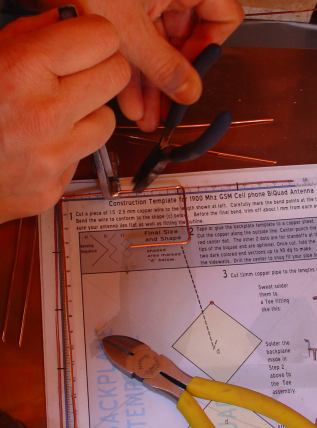
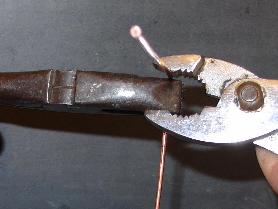
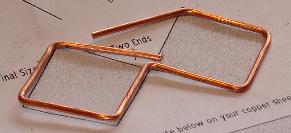
This is a nearly complete BiQuad-Note how the wire is centered on the
paper template, so that the center-to-center sides of the wire squares
are precisely 1/4 wave lengths.
It's very important to make the antenna lie in one plane with straight
sides, tight 90 dg bends, and to not scar the
wire. It can be a little hard to do.
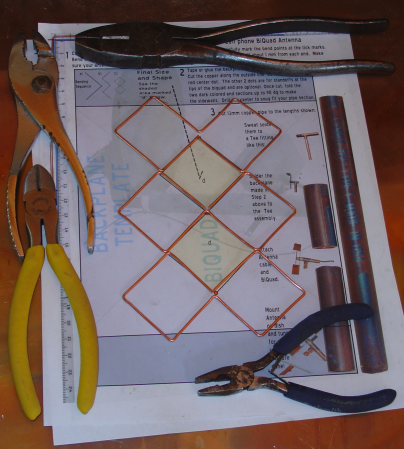
To make a big batch of BiQuads, I built a
wooden bending jig from white oak. Use a good wood glue to
assemble the jig,
screws alone won't suffice. It's quicker, but with practice the
template method makes a better antenna.
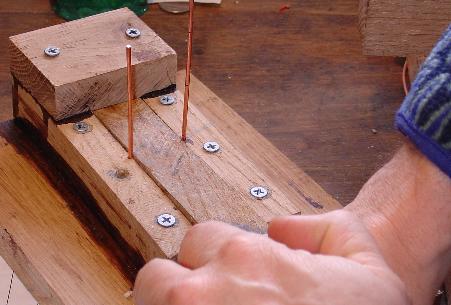
After a few bends and twists, Voila, a decent BiQuad almost complete.
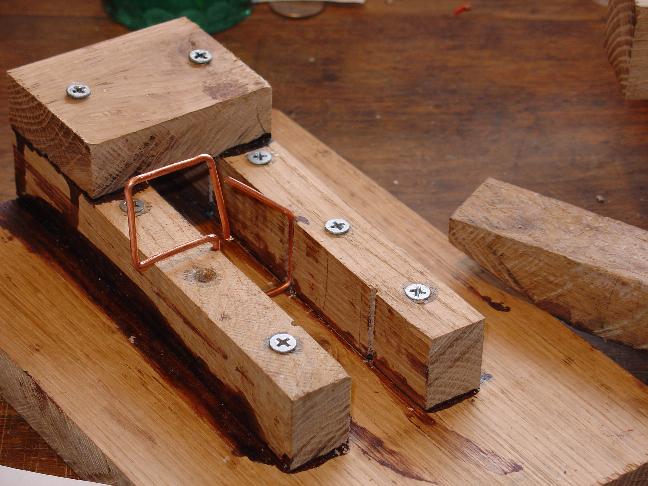
Once you have the BiQuads made, the backplanes and post supports need
to be built.





